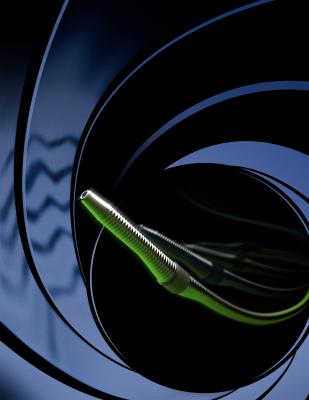October 23, 2013 — Cardiovascular Systems Inc. (CSI) announced that it has received premarket approval (PMA) from the U.S. Food and Drug Administration (FDA) to market its Diamondback 360 Coronary Orbital
Atherectomy System (OAS) as a treatment for severely calcified coronary arteries.
This approval opens up a large, underserved U.S. market opportunity for CSI, estimated to exceed $1.5 billion annually.
“Severe coronary arterial calcium is an underestimated problem in medicine, with limited options for treatment,” said David Martin, president and CEO of Cardiovascular Systems. “The ORBIT II trial proved our Diamondback technology is safe and effective in treating this complex disease.”
“Coronary calcium is undertreated in the cardiac
cath lab. Having a user-friendly device available to effectively treat severe coronary calcium may increase the safety of CAD interventions for this difficult-to-treat population while improving long-term patient prognoses,” said Gregg Stone, M.D., professor of medicine, Columbia University, director of Cardiovascular Research and Education, Center for Interventional Vascular Therapy, New York Presbyterian Hospital/Columbia University Medical Center and co-director, Cardiovascular Research Foundation (CRF), New York City.
Clinical Data Backs Systems’ Effectiveness
ORBIT II is CSI’s study evaluating the safety and effectiveness of the company’s orbital atherectomy technology in treating the problematic subset of patients with severely calcified coronary lesions. It is the first study in history that sought approval for treating these lesions.
Led by Jeffrey Chambers, M.D., Metropolitan Heart and Vascular Institute, Minneapolis, ORBIT II demonstrated that CSI’s technology produced clinical outcomes that exceeded the trial’s two primary safety and efficacy endpoints by a significant margin within one of the most challenging patient populations.
At 30 days, ORBIT II results showed patient freedom from major adverse cardiac events (MACE) was 89.8 percent and procedural success was 89.1 percent. Excluding in-hospital MACE, procedural success was 98.6 percent with 97.7 percent of stents successfully delivered. Moreover, 92.8 percent of patients were free from severe angiographic complications, and core lab assessed final procedure residual stenosis was 4.7 percent.
“Patients who suffer from severely calcified coronary lesions are one of the toughest-to-treat populations, and previous studies have shown these patients have worse outcomes,” said Chambers. “Thirty-day ORBIT II results demonstrate that CSI’s orbital atherectomy technology is safe and effective. With FDA’s approval, physicians now have new technology to treat patients with severely calcified coronary lesions.”
The Diamondback 360 Coronary OAS uses an electrically driven 1.25 mm diamond-coated crown to safely reduce calcified lesions in coronary blood vessels. This ultimately helps enable successful stent deployment, which facilitates more favorable patient outcomes.
Coronary Rollout Strategy
CSI will begin a controlled commercial launch of its Diamondback 360 Coronary OAS immediately.
“Our initial coronary rollout will be very targeted,” said Martin. “With a dedicated team of coronary sales specialists, we will focus on a limited number of the top medical institutions in the United States and continue that strategy for several quarters. During that time, we'll focus on providing physicians with a quality experience and on driving adoption in those accounts. Additionally, we’ll conduct post-market studies to enhance our product offering and further build our body of clinical data.”
CSI will provide more details on FDA approval and its launch plans for the Diamondback 360 Coronary OAS during its upcoming fiscal 2014 first-quarter results conference call.
For more information: www.csi360.com


